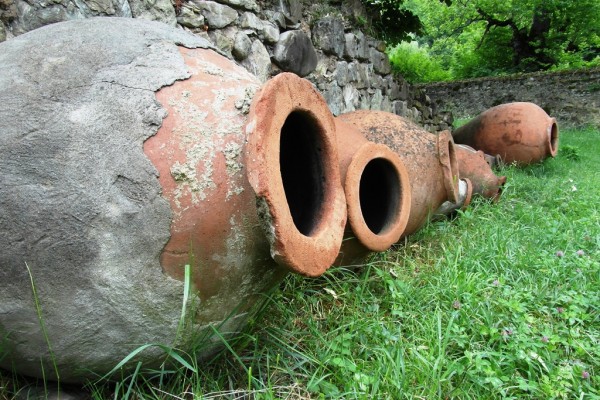The Republic of Georgia could be considered the cradle of Christianity and wine.
While it was the second country (after Armenia) to officially adopt Christianity as its religion back in the 4th century, archaeologists have traced the origins of wine production back to 6,000 B.C. in Georgia.
The Kakheti region in Georgia provides a great introduction to the country’s vast religious history and its wine-making tradition. Indeed, the two seem to go hand-in-hand as many monasteries featured Georgian wine presses and wine storage systems.
I managed to sample a lot of it over a two day period in late May. It was a marathon of sightseeing that took me to a plethora of monasteries, wineries, a castle and the very cute hilltop town of Sighnaghi. While much of what I saw is accessible by public transportation, I hired a driver, Rezo, for both days, which allowed me to squeeze a lot more into a short time period. Here is a look at what I saw:
Day One
Our first stop was at the Alaverdi Cathedral, which was built by King Kvirike of Kakheti in the 11th century. It was the tallest church in Georgia until the construction of Trinity Cathedral in Tbilisi just a few years ago. The cathedral survived damage from both earthquakes and invaders over the centuries, but the Russians unfortunately whitewashed the interior in the 19th century, covering up frescoes that date as far back as the 11th and 13th centuries. They were restored in the 1960s, but alas, no pictures were allowed.
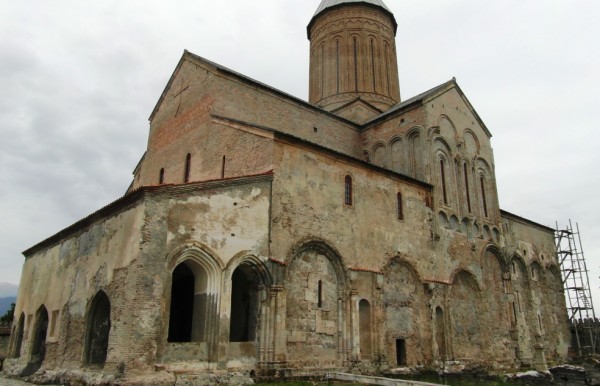
From there, we headed to the Ikalto Monastery and Academy, which is where the famous Georgian poet Rustaveli is thought to have studied. Zenon, one of the 13 Syrian fathers, founded the monastery in the 6th century and the main Transfiguration Church was built in 8th and 9th centuries. Like the Alaverdi Cathedral, the Russians whitewashed the interior walls in the 1800s. In addition to the churches of the monastery complex, ruins of the Ikalto Academy remain.
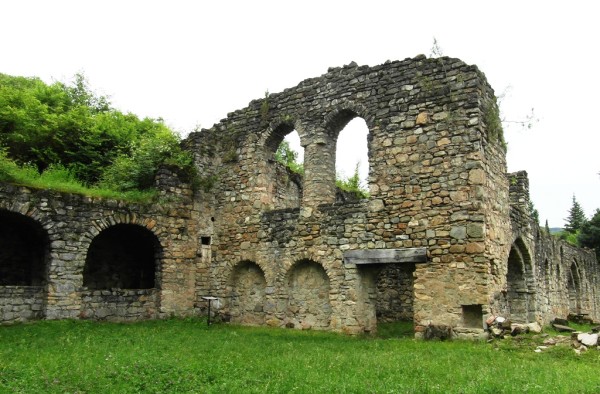
Taking a break from monasteries, we headed to Tsinandali and the Chavchavadze estate. This was once the home of Prince Alexander Chavchavadze, the son of Georgia’s first ambassador to Russia and a godson of Catherine the Great. The home was ransacked in 1854 by Lezgin tribesman from Dagestan who also kidnapped the wife, children and other family members of Alexander’s son, Prince David Chavchavadze. David had to mortgage the house to raise the ransom and when he was unable to repay the loan, the estate passed to Tsar Alexander III. It is now part of a 200,000 square meter park which includes the Tsinandali Winery, founded by Alexander’s father Garsevan. I paid 7 Lari for a tour of the mansion, a walk around the gardens and 1 glass of Georgian wine.
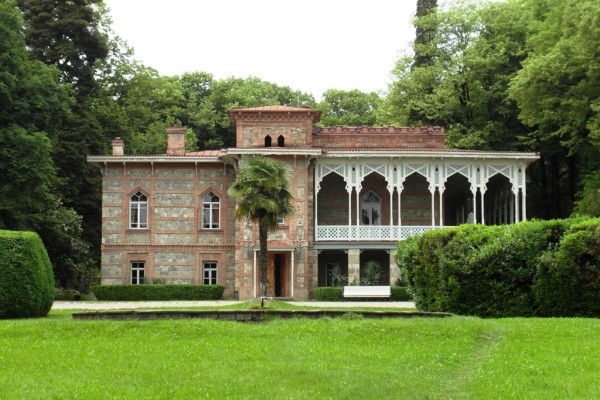
Next up was a winery in the town of Kvareli (whose name has unfortunately completely escaped me), where I took a short tour and tasted four wines, two whites and two reds, all of which were pretty darn good. I think I was supposed to pay for the whole thing, but they let me go without paying – although I did at least buy a bottle of red for 9.85 lari (about $5).
Our final wine stop was at the Kindzmarauli Winery just outside of Kvareli. You may recall that, back in February I visited the Milestii Mici Winery in Moldova, which boasts Europe’s largest underground wine cellar. Well, now I can say I have also visited the second largest underground wine cellar at Kindzmarauli. The largest winery in Georgia, Kindzmarauli features 8 kilometers of tunnels, 3 of which are used for wine storage.
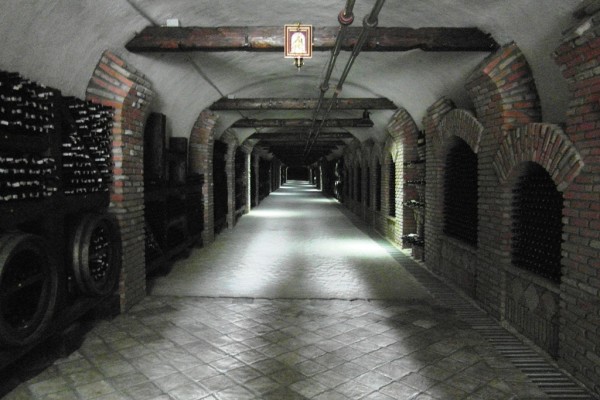
With a good supply of Georgian wine in my system (but no food – brilliant!), it was time to visit the Nekresi Monastery, which required a 1.5 kilometer walk uphill. Did I mention I was also wearing jeans? I really wasn’t prepared for a steep hike and I was quite the sweaty mess by the time we reached the top.
Luckily, the effort was well worth it. The views across Alazani Valley were incredible and upon reaching the top, I got to enjoy one of the first churches in Georgia, built there in 4th century. Another of the 13 Syrian fathers, Abibos, founded the monastery in the 6th century before he was killed after pouring water on a Zoroastrian sacred fire. A three-church basilica at the monastery dates from the 8th-9th centuries and the main Church of the Assumption dates to 6th & 7th centuries. Inscriptions found here are said to be the earliest examples of Georgian alphabet.

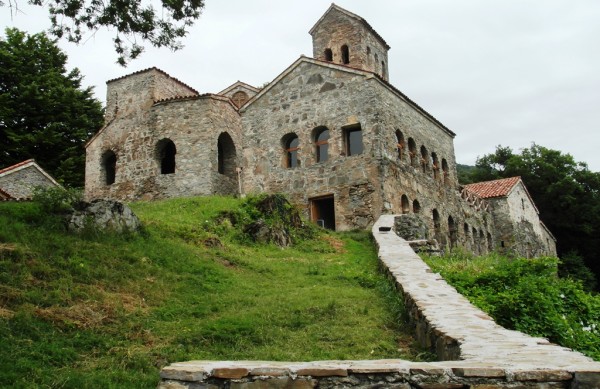
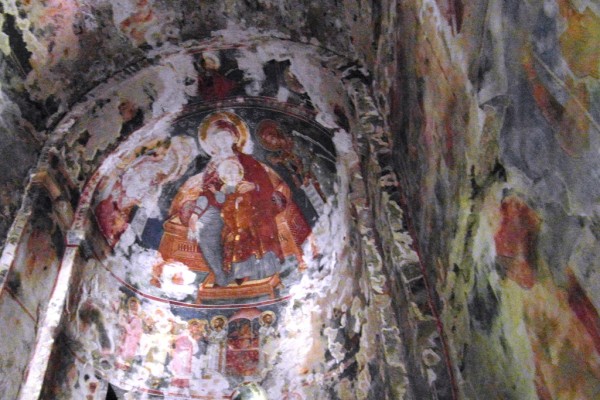
Our last stop before finally heading back to Telavi was at Gremi to visit the 16th century castle and church there. Gremi was the capital of Kakheti from 1466 to 1672 but was destroyed by Shah Abbas in 1616. However, much of its castle, including the Church of Archangels, survived. The church was built in 1565 by King Levan of Kakheti, with interior frescoes painted in 1577. It is considered to be one of best examples of the Georgian adaptation of Persian styles of architecture such as patterned brickwork.
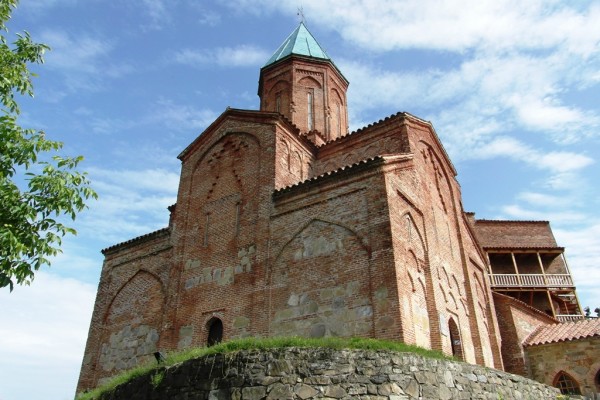
Day Two
As if I didn’t get my fill of Kakheti the previous day, we set out again at 10 a.m. to explore some more.
First up was the 8th century Kvelatsminda church in Gurjaani – the only double domed church in Georgia. Of course, this is also the site of an active monastery.
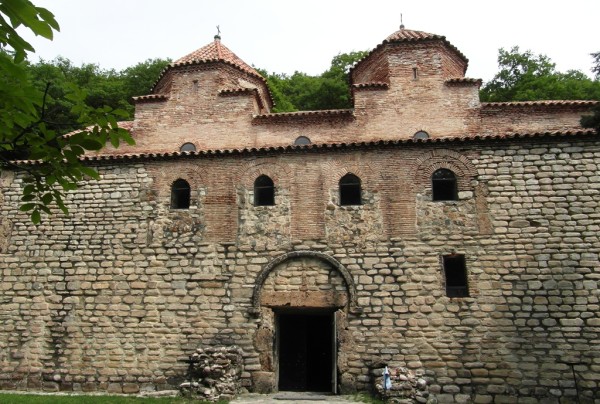
Just before stopping in the town of Sighnaghi, we visited the Bodbe Monastery (also known as Ninotsminda), dedicated to St. Nino, who is credited with helping to bring Christianity to Georgia and is one of the most important saints in the Georgian Orthodox Church. King Mirian III of Iberia originally built the monastery over St. Nino’s grave in the 4th century and it grew in prominence as most of the kings of Kakheti chose to be crowned there.
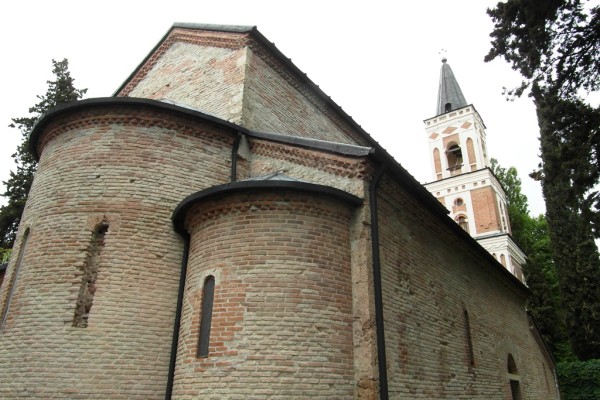
Not far from the monastery, we reached one of the highlights of a visit to Kakheti – the Italianesque town of Sighnaghi. A town of just 2000 people, King Erekle II developed Sighnaghi over earlier ruins in the 18th century as a refuge for the area’s people against Lezgin and Persian attacks – the name comes from the Turkish word for “shelter.” King Erekle also invited Armenian artisans and tradespeople to live there and by the 19th century it was one of Georgia’s leading trading centers. 75% of houses today date to 17th, 18th and 19th centuries and 4 kilometers of defensive city walls still stand.
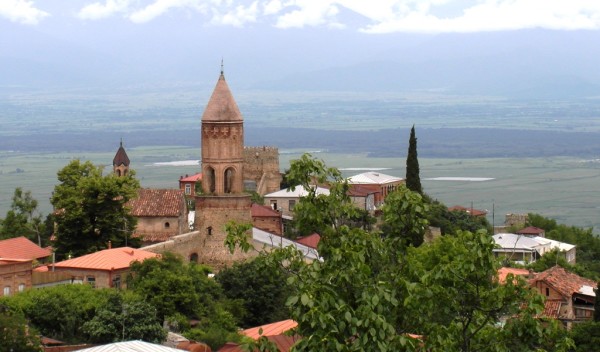
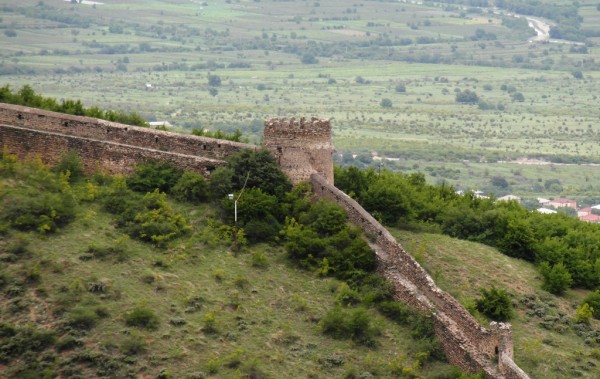
Finally, on the way back to Telavi, we stopped to visit the Akhali (New) Shuamta Temple and the Dzveli (Old) Shuamta Monastery. The three nave basilica at Dzveli Shuamta is one of the oldest churches in Georgia, built in the 5th century. Two other churches on the site date to the 7th century.

Akhali Shuamta has a fun little legend associated with it that says that Queen Tinatin, wife of King Levan of Kakheti, dreamed as a child that she would marry the prince in whose farm she would find a white cornel tree and build a Holy Virgin church there. By marrying King Levan, her dream came true.

Altogether, I think we squeezed in four monasteries, three wineries, a cathedral, a church and a castle. And I got an incredible overview of the history of both Christianity and wine not just in Kakheti, but in Georgia as a whole.
Not bad for two days.

